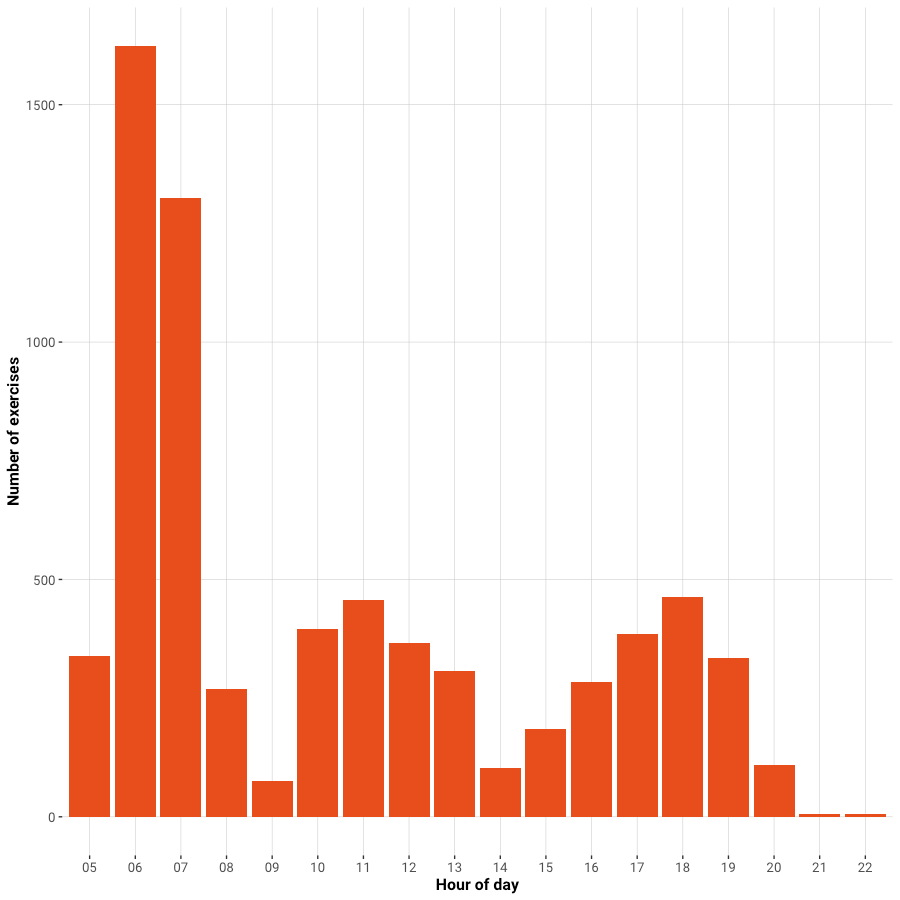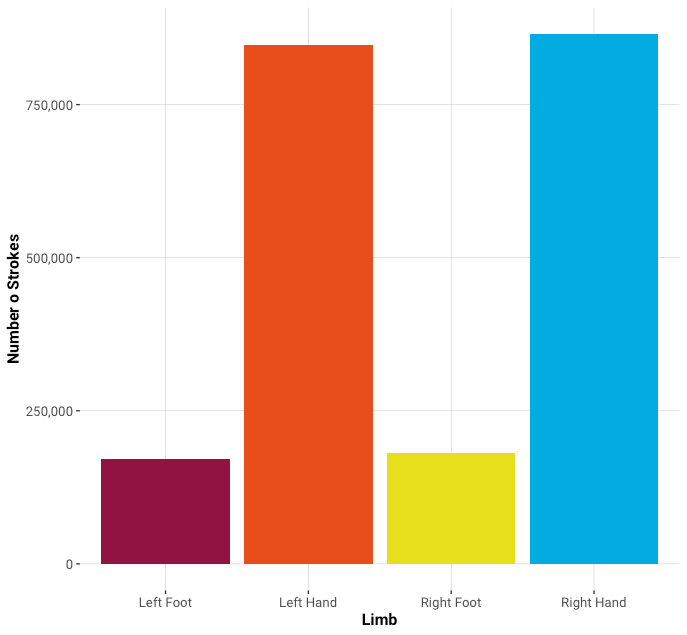Since October 2022 I've played 2,064,316 drum strokes in 7,014 practice exercises.
- Neil BeatBalance

- Mar 7, 2024
- 4 min read
Updated: Mar 9, 2024
When I started learning the drums 4 years ago, doing formalised practise exercises was a new experience for me.
Doing a lot of work on the practice pad I found myself asking some questions I think everyone who does these kinds of exercises asks themselves at some point:
"Is this particular exercise the most effective thing I can be doing right now"?
"How much should I be practising this particular thing?"
"How do I know when this is good enough?"
"Am I getting better at this?"
I want to start answering these questions. Not just for me, but hopefully for everyone. At the moment the app allows anyone to export their data and I'll be putting up the R code to unpack it on Github soon (once I've had a chance to clean it up and add explanatory comments).
Among other things, BeatBalance records the timing and volume of every stroke you play with the app: as well as this data can be exported as JSON and loaded into external data analysis applications.
In this post, I just want to have a look at the broad strokes of my practice, and point out one or two interesting things which merit further investigation to give a flavour of what's in the data - in later blogs I'll start looking at what I've learned so far about what is effective in terms of practice and hopefully point out some future directions.
Let's start by looking at my overall volume of practice. Since the time and date of each exercise is recorded, we can have a look at when in the day I do my practice:

As you can see I am a morning person! An interesting question I'll look at in a later post is what the best time of day is to practice?
And we can also have a look at when in the week I practice most:

This chart does of course only include time I'm using BeatBalance- at the weekends I like to focus more on the important stuff (playing music). Another interesting question this prompts is: what is the optimal number of days per week to practice? As with any physical activity it's important to allow some time to recover from practice in order to avoid injury.
We can also look at how the amount I've practiced has changed over time:

There looks to be an overall upward trend - I have found that as my skills improve I'm more motivated to practice, and if there's one thing that I really hope I can achieve with this app it's to help other people find that motivation as well.
Let's have a look at the tempos of exercises. 30 and 60BPM are the clear favourites here, and then you can see smaller counts for tempos above - these are mostly where I've used the Speed Builder mode to gradually increase the tempo of an exercise. Up at the higher end you can see a Speed Builder exercise for single stroke rolls I've been working on starting at around 120BPM a year or so ago and gradually increasing my tempo to what it currently is (around 140BPM).

I've already mentioned the total number of strokes in the data set is 2,064,316. But how does this break down by limb?
Limb | Stroke Count |
Left Foot | 171,508 |
Right Foot | 180,308 |
Left Hand | 846,840 |
Right Hand | 865,660 |
Total | 2,064,316 |

So overall it's pretty apparent that I've been massively favouring my hands over my feet.
How does this break down over time though?

As you can see I'm gradually increasing the proportion of foot work I'm doing.... why?
Well aside from trying to make sure my limbs are all reasonably in balance, we can also look at the relative accuracy of my hands and feet (the timing error is the amount of milliseconds my strokes are away from the 'perfect' position on average:

My feet are gradually coming into line in terms of accuracy with my hands, but there is still some distance to go. It's a huge improvement over a year ago though and I'm feeling the benefits in my kit playing as well.
Lastly, to stop this getting too long... let's have a look at something potentially interesting. The stroke length error is a measure of how evenly spaced my strokes are: roughly speaking it's how different in length each stroke is from the one preceding it.
Here's a breakdown by hour:

Now it's important to say here that I'm not going to draw any conclusions from this: this data wasn't collected in a controlled way, and of course it's only my data. Eventually I want to be able to conduct proper experiments to address these questions: the time for that is once the app has a decent userbase (who are up for this kind of thing). However I do think there are some interesting things to say: I'll have a look at it (and the perhaps more interesting question of whether practicing at different times of day leads to different amounts of improvement) in more detail in another blog.
Comments